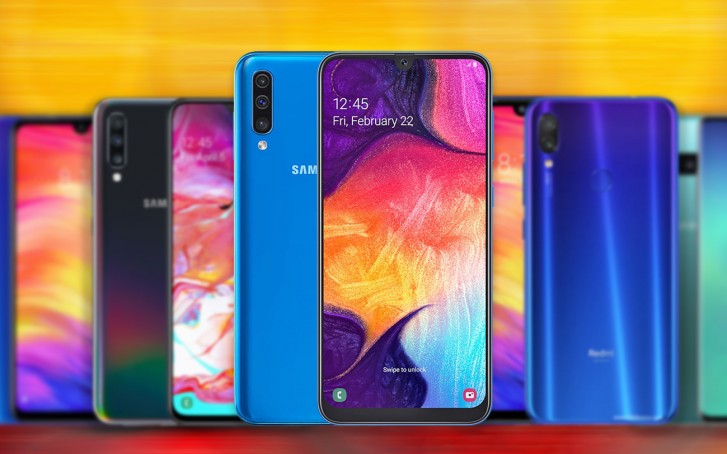Google’s Bold Leap into Next-Gen AI and Camera Innovation
The Google Pixel 4 has officially launched in Australia and it brings a fresh focus on computational photography, innovative AI features, and a refined Android experience. Google’s latest flagship is designed to be more than just a phone—it’s a powerful tool for capturing life’s moments, enhancing productivity, and engaging with Google’s suite of intelligent services in new ways. With standout features like Face Unlock, Motion Sense, and an improved camera system, the Pixel 4 aims to set new standards for what an Android phone can offer.
Design: Refined Minimalism with a Touch of Playfulness
The Pixel 4 comes with a distinctly clean, minimalist design, highlighted by a matte glass back and a new square camera housing that stands out without feeling intrusive. The available colors—Just Black, Clearly White, and the limited-edition Oh So Orange—lend the Pixel 4 an understated yet playful aesthetic.
The screen, which is a 5.7-inch OLED on the standard Pixel 4 and a larger 6.3-inch on the Pixel 4 XL, showcases Google’s Smooth Display technology, offering a 90Hz refresh rate that makes scrolling and animations appear remarkably fluid. While the bezels are a bit larger than competing models, they house the radar-based Motion Sense sensors, which allow for a new level of gesture control.

Face Unlock and Motion Sense: A New Way to Interact
The Pixel 4 debuts two ambitious features that transform how you interact with your device: Face Unlock and Motion Sense.
- Face Unlock: The Pixel 4’s Face Unlock uses infrared sensors, making it both fast and secure. Unlike other Android devices that rely on fingerprint scanners, Face Unlock on the Pixel 4 works seamlessly, allowing users to unlock their phones with a glance, even in low light.
- Motion Sense: Google’s Motion Sense, powered by a tiny radar sensor, enables hands-free gesture control for simple tasks like snoozing alarms, skipping songs, and silencing calls. While Motion Sense is limited to basic gestures right now, it’s a promising peek at how we might interact with our devices in the future, especially when hands-free interaction could be a benefit—like while cooking or working out.
These features are well-executed, adding real value to the user experience. Motion Sense, though somewhat niche at launch, is still a unique touch that sets the Pixel 4 apart.
Camera: Computational Photography at Its Finest
Google’s Pixel line has always excelled in photography, and the Pixel 4 takes this further with its new dual-lens setup, combining a 12.2MP main sensor with a 16MP telephoto lens. Google’s strong software processing continues to shine, delivering photos with vibrant colors, sharp details, and impressive low-light performance.
- Astrophotography Mode: Perhaps the Pixel 4’s most intriguing camera feature is Astrophotography Mode, which captures clear, detailed night sky shots. Google has engineered this mode to be intuitive, allowing users to simply point the camera at the night sky, and the phone will automatically engage long-exposure processing to capture stars and celestial objects.
- Dual Exposure Controls: The Pixel 4 also introduces Dual Exposure Controls, enabling users to adjust shadows and highlights separately. This gives photographers more creative control over their images, letting them achieve a balanced look even in high-contrast environments.
Everyday Use Case: Social Media-Ready Photography
For users who enjoy capturing and sharing their lives, the Pixel 4 is an ideal choice. Its Portrait Mode produces beautiful shots with a natural depth effect, while Night Sight captures clear, bright images without the need for flash. Whether you’re capturing cityscapes, portraits, or special moments, the Pixel 4’s camera is equipped to handle it all.
Productivity and Software: Leveraging Google’s AI Prowess
Running on Google’s clean Android 10 with some exclusive Pixel features, the Pixel 4 offers a smooth, bloat-free experience. This version of Android feels polished and responsive, and the exclusive Pixel features help make it a productivity powerhouse.
- Google Assistant Integration: The new Google Assistant is more deeply integrated with the Pixel 4, faster and able to understand context more effectively. Users can quickly switch between apps, send texts, and manage reminders just by talking to their phone, without needing to pause their work or scroll through menus.
- Recorder with Live Transcription: The Pixel 4’s Recorder app is a remarkable tool for anyone who needs to take notes or capture conversations. With real-time transcription that’s surprisingly accurate, the Recorder app makes it easy to record meetings, lectures, or even thoughts on the go and revisit them later in text form.
- Ambient Display with Now Playing: Building on Google’s AI capabilities, the Pixel 4 can recognize music playing in the background, showing song information on the Ambient Display without needing to open an app. This is particularly useful for music enthusiasts who want to identify a tune on the spot.
Battery Life: Solid, But Limited
The Pixel 4 is powered by a 2800mAh battery (3700mAh in the Pixel 4 XL), which Google claims should get users through the day with moderate usage. However, heavy users may find themselves needing a midday charge, particularly with the 90Hz refresh rate active. While the fast charging and wireless charging capabilities mitigate this somewhat, battery life is a trade-off that comes with the Pixel 4’s more powerful features.
Practical Value: Ideal for Google Ecosystem Users
The Pixel 4 integrates seamlessly with Google’s suite of services, making it an excellent choice for users invested in Google’s ecosystem. Whether it’s Google Photos, Drive, or Assistant, the Pixel 4 ensures these tools are always just a swipe or voice command away, allowing users to manage tasks and sync information across devices effortlessly.
Workflow Example for Professionals
For professionals who rely on Google’s tools, the Pixel 4 is a practical daily driver. With Google Assistant’s smart routines and the Recorder’s transcription capabilities, the Pixel 4 streamlines tasks such as scheduling, note-taking, and even navigating meetings. Combined with Face Unlock for quick access and Motion Sense for hands-free control, the Pixel 4 is a versatile companion for a productivity-focused lifestyle.
Pros and Cons
Pros:
- Exceptional camera performance, especially in low-light and astrophotography
- Innovative Face Unlock and Motion Sense features
- Clean, efficient software with fast updates and deep Google Assistant integration
- Recorder app with real-time transcription
- 90Hz Smooth Display for fluid visuals
Cons:
- Limited battery life, especially with 90Hz display active
- No fingerprint scanner as an alternative to Face Unlock
- Limited Motion Sense gestures at launch
- Lacks expandable storage options
Comparison: Pixel 4 vs. iPhone 11 vs. Samsung Galaxy S10
| Feature | Google Pixel 4 | iPhone 11 | Samsung Galaxy S10 |
|---|---|---|---|
| Display | 5.7” OLED, 90Hz | 6.1” LCD, 60Hz | 6.1” Dynamic AMOLED, 60Hz |
| Processor | Snapdragon 855 | A13 Bionic | Exynos 9820/Snapdragon 855 |
| Primary Camera | 12.2MP + 16MP telephoto | 12MP wide + 12MP ultra-wide | 12MP wide + 12MP ultra-wide + 12MP telephoto |
| Face Unlock | Yes, secure with radar | No, Face ID | Yes, but less secure |
| Special Features | Motion Sense, Astrophotography | Face ID, Deep Fusion | In-display fingerprint, Wireless PowerShare |
| Battery | 2800mAh (3700mAh on XL) | 3110mAh | 3400mAh |
| Operating System | Android 10 | iOS 13 | Android 9 (upgradable) |
| Price Range | $799+ AUD | $1199+ AUD | $1249+ AUD |
Key Takeaways
- Pixel 4 vs. iPhone 11: The Pixel 4 offers superior low-light camera performance, unique AI features like Motion Sense, and a higher refresh rate display. The iPhone 11, however, provides more secure Face ID and slightly better battery life, as well as a powerful A13 Bionic processor.
- Pixel 4 vs. Samsung Galaxy S10: The Pixel 4 brings Google’s cutting-edge computational photography and deep AI integration, while the Galaxy S10 excels with its dynamic display, larger battery, and in-display fingerprint scanner. Samsung’s Wireless PowerShare is also a bonus for users who value charging flexibility.
Final Rating: 4/5
The Verdict: The Google Pixel 4 is an ambitious device that brings some of the most advanced AI and computational photography features to the Android platform. Its camera quality is exceptional, particularly for night shots and astrophotography, making it a standout choice for photography enthusiasts. Motion Sense and Face Unlock add unique value, though they’re not without limitations. Battery life could be improved, but for users embedded in Google’s ecosystem, the Pixel 4 provides a smooth, productive, and AI-driven experience.
With a clean Android experience, timely updates, and exclusive Google tools, the Pixel 4 is ideal for users looking to leverage Google’s best software in a smartly designed, feature-rich smartphone.




